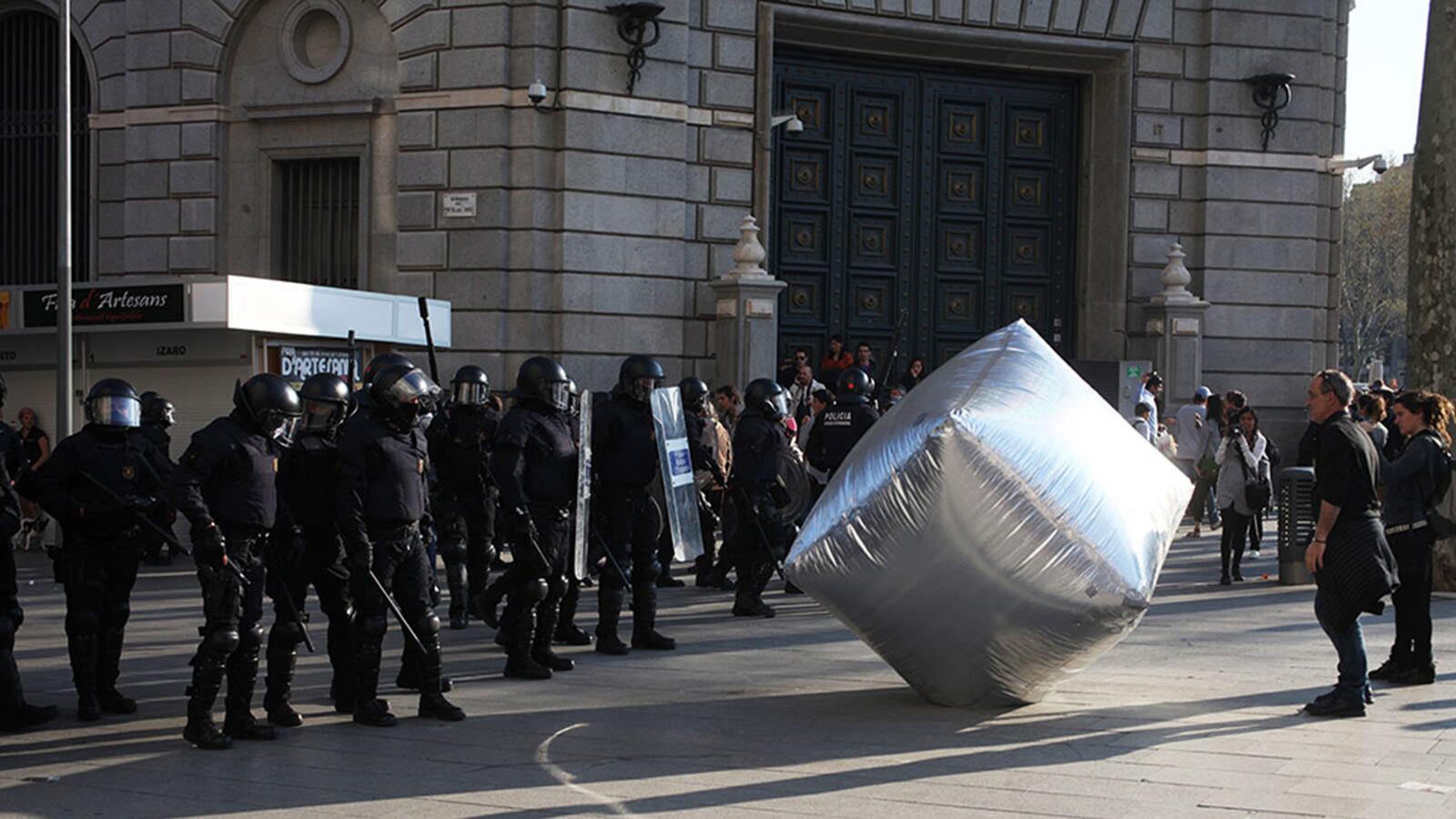Whether you are planning to halt a battalion of mechanical diggers, shut down a facility, or simply secure maximum attention to your cause, there’s certainly an art to the successful protest.
The Victoria and Albert Museum in London has become the first institution to hold an exhibition examining the ingenious pieces of art and design that have made demonstrations work. Through an extraordinary breadth of innovation, from arm braces that make human blockades impossible to dismantle to giant inflatables that can alter the media coverage of a struggle, Disobedient Objects argues that flashes of inspirational design have often made the difference in the success of a protest.
“You get a lot of exhibitions that say: ‘Designs that changed the world,’” said Gavin Grindon, one of the show’s curators. “These are designs that really did change the world.”
Walking through the show, it’s impossible to miss the trend—virtually all of the innovative, daring pieces of design and art have emerged from left-wing protest groups. The organizers insist this was never the intention, they just couldn’t find any examples from the Right. Grindon told The Daily Beast the realization surprised him, but it seems the Left is more inventive, better at protesting.
“I think, by structure, those movements on the far-right aren’t about creating solidarity, aren't about creating new worlds. They're often about preserving at least imagined versions of the world, so they tend [to] not radically experiment with the culture,” he said. “They tend not to have the same level of creativity.”
The most directly successful object in the show is the lock-on, a metal tube with a bolt through the middle that protesters place their arms inside. Versions of the device were first designed in the late 1980s, allowing protesters to chain their arms to each other or around something in a way that the police could not safely dismantle. You can point to areas of forest that are still standing in New Zealand or roads that were not built in Britain because of the stubborn realization of this simple design.
Other exhibits worked more obliquely, altering the mood of a protest or changing the way a demonstration was later portrayed to the public. Hanging from the exhibition ceiling are two huge inflatable cobblestones. The blow-up props were first used at a protest in Berlin in 2010, where the police and the media were warned in advance that violence was expected after previous events had been marred by cobbled paving stones thrown at police.
This time, demonstrators threw the inflatables at advancing officers. “The whole demonstration changes instantly,” Grindon explained. “The police have to decide what on earth they are going to do with this thing. If they throw it back, suddenly they are playing beach volleyball with anarchists, or they try and arrest it in which case they look completely absurd. They're climbing on this giant balloon and their robocop suits don't look so sensible anymore.”
The blow-up stones were designed by a German-Hungarian artist and “inflatables maniac,” who traces his art form back to the 1927 Macy’s Thanksgiving Day Parade. “We realized that inflatables can be a good media spectacle,” Artúr van Balen told The Daily Beast. “It transforms the protest into a joyful celebratory atmosphere that is hard to control.”
Van Balen, who said the cubes also impede the police and help form a barrier to protect protesters, works with a network called Tools for Action. Why are there no such groups working with the recent waves of right-wing protests? “I can't say,” van Balen said. “Maybe because we organize collectively and work together.”
Catherine Flood, co-curator of Disobedient Objects, agreed that the spirit of collaboration had been crucial in creating the conditions for most of the innovation on show. “Those conditions are about collective working about this kind of open source ethos and solidarity with other movements, so we did find that movements on the far right don’t share those conditions,” she said.
“A lot of the objects are about protesters shifting the balance of power away from the police to their own demonstrations,” Flood explained. One of the best examples in the fascinating exhibition is a simple orange dwarf’s hat from Poland. It was illegal to hold political protests in Poland in 1989, so 10,000 disaffected students got together in fancy dress. “This is not a protest, it’s a gathering of dwarves,” they told the authorities. “The police were forced into arresting thousands of dwarves,” Flood said. “It just highlighted the absurdity of their position.”
Disobedient Objects is at the Victoria and Albert Museum in London from July 26 to February 1, 2015.






